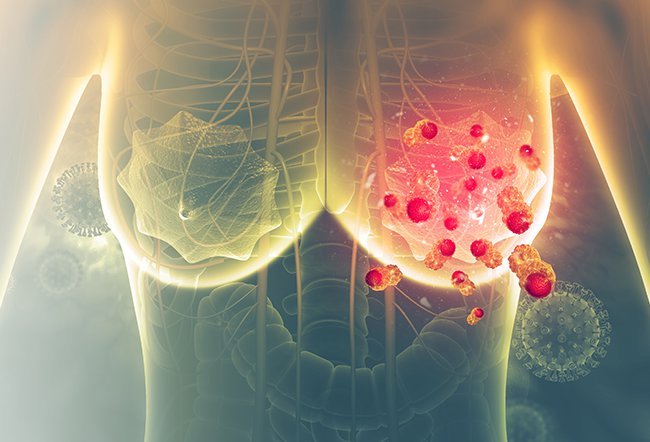Can Paget's Disease Occur in Both Breasts?

Paget’s disease can occur in both breasts, but this is quite rare. The disease generally affects only one breast.
Paget's disease is a rare form of breast cancer and makes up only 1%-4% of all types of breast cancer. The disease usually starts at the nipple and extends to the areola.
Paget's disease is also called:
- Mammary Paget's disease
- Paget's disease of the nipple
- Paget's disease of the nipple and areola
What causes Paget's disease?
The exact cause of Paget's disease is unknown. Scientists suspect that a combination of environmental and genetic factors may play a role in causing the disease. Several genes have been identified that are linked with an increased risk of developing the condition.
Some theories speculate that cancer cells from underlying ductal breast cancer travel through milk ducts to the nipple and areola, causing Paget's disease.
Another theory posits that this disease develops independently in the nipple. This theory explains the rare cases in which Paget's disease occurs without any underlying cancer.
What are risk factors for Paget’s disease?
Factors that can put people at risk of Paget’s disease include:
- Age. Older people, particularly people over age 55, are affected more often.
- Gender. Females are more likely to develop the condition.
- Obesity. Putting on extra pounds may increase the risk of the condition.
- Family or personal history. If a person or any of their parents or siblings have had breast cancer, it may increase their risk of Paget's disease.
- Hormone therapy. Taking estrogen hormone treatments after menopause may put people at a greater risk of Paget’s disease.
- Excessive drinking. Heavy alcohol drinking may trigger Paget's disease.
What are the signs and symptoms of Paget's disease?
Signs and symptoms of Paget's disease are usually mistaken for symptoms of common skin conditions such as eczema and dermatitis. These include:
- Redness or itching of the nipple or areola
- Burning sensation of the skin of nipple or areola
- Inverted nipple
- Bloody or yellowish discharge from the nipple
- Lump in the breast
How is Paget's disease diagnosed?
After taking a medical history, your doctor will examine your breasts, palpate them, and look for lumps or any other abnormality in the breasts or armpits.
- Biopsy. During a biopsy, a small sample of tissue is collected from the affected breast and sent to a laboratory for analysis. These tissue samples can be collected in many ways:
- Surface biopsy (gently scraping cells of the breast skin)
- Shave biopsy (using a sharp tool to collect a sample tissue from the top layer of the skin)
- Punch biopsy (a small and round piece of tissue is collected with a special circular tool called a punch)
- Wedge biopsy (a small part of the tissue is collected using a scalpel)
- Imaging tests. Imaging tests will look at the inside of the breasts and help doctors distinguish between an abscess and a tumor. Your doctor will identify the extent, size, and depth of the cancer. These tests include:
- Mammography
- Breast ultrasound
- Breast magnetic resonance imaging
